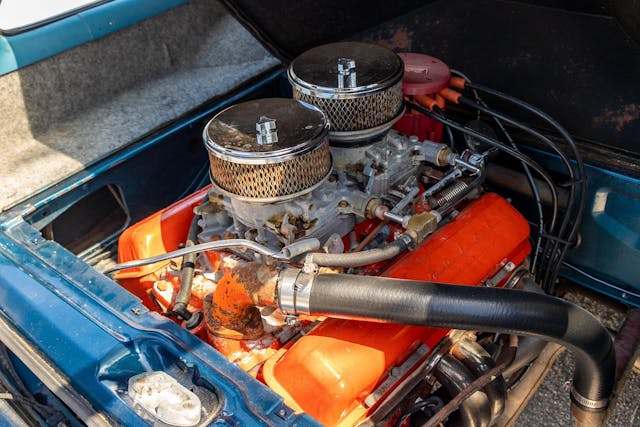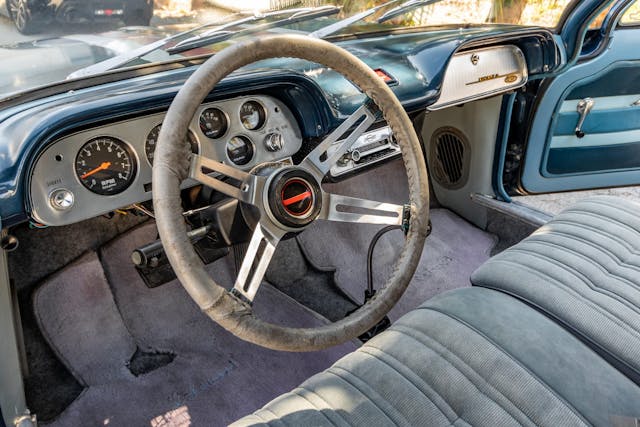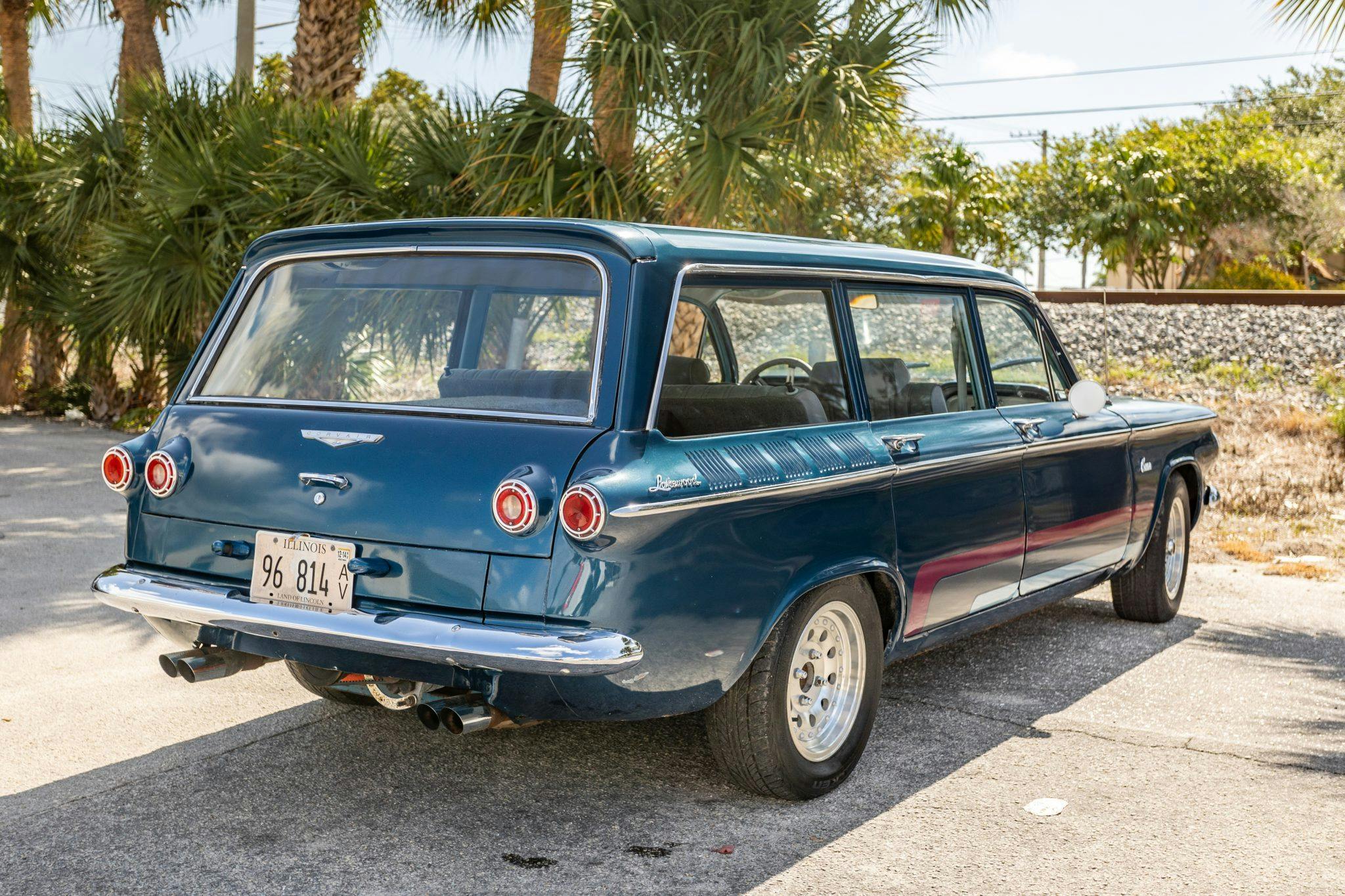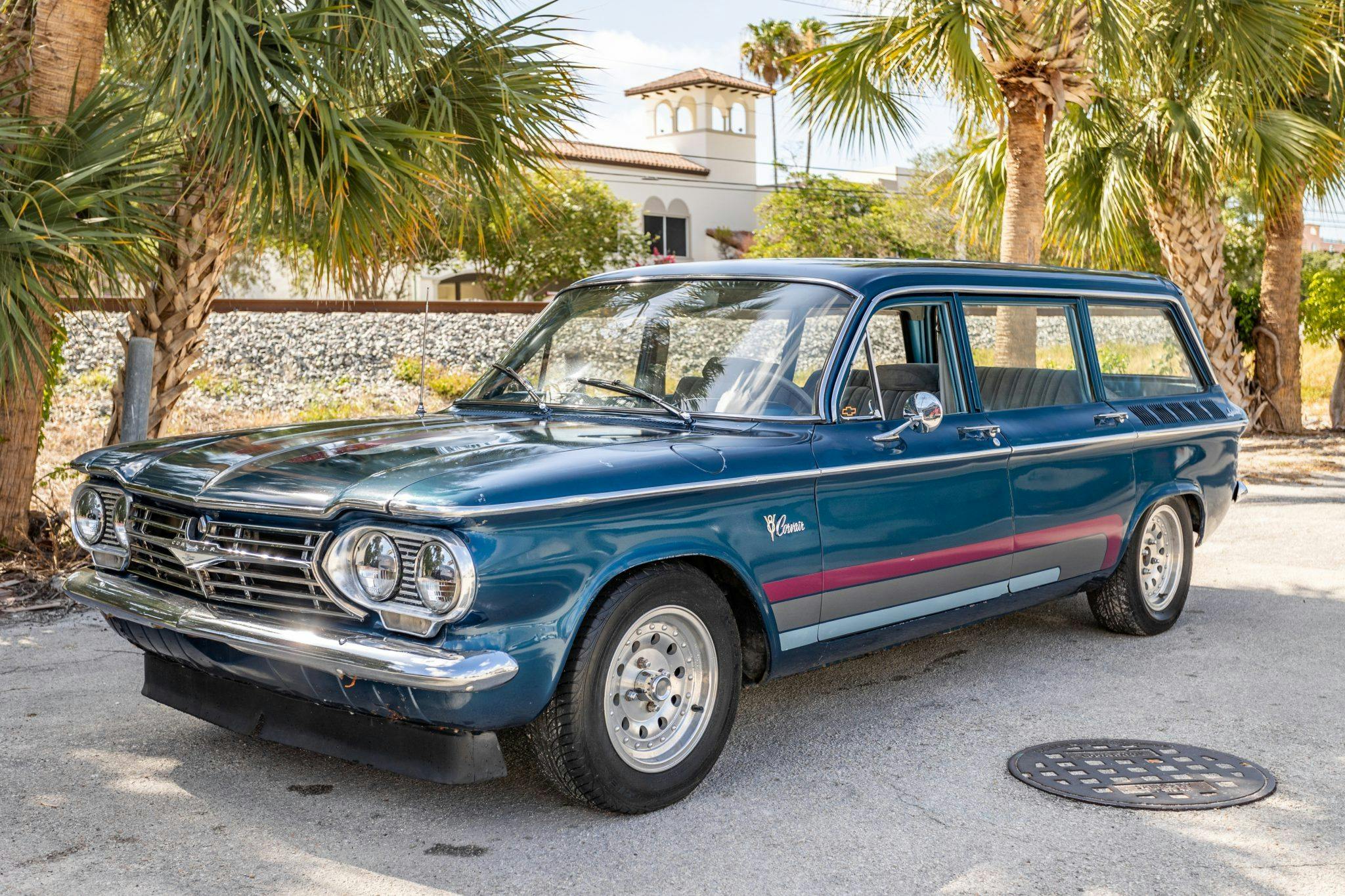This Corvair Lakewood wagon sports a 283-cube surprise
Of all the things that make the Chevrolet Corvair awesome, an excess of power is not among them. Folks have been attempting to remedy that for decades, with varying degrees of success. However, in the middle of my endless scroll of cars for sale online popped up a particularly promising candidate: This Lakewood wagon, which sports a V-8 swap and appears to be a bang-up job. The best part? The seller knows exactly what he has.
Every single one of the production Corvairs left the factory with an air-cooled flat-six, despite the guy at the car show telling you he had “one of the four-cylinder versions with the push-button transmission back in the day.” No, you didn’t. Please stop spreading that lie. There have been a multitude of documented swaps into the unibody Corvair platform, but the vast majority have sought to improve performance by shoving in more power. Too much power, in most cases.

This Lakewood seems to have struck a decent balance. A Chevy 283-cubic-inch small-block sits in the stock location and appears to be attached to a stock Corvair four-speed transmission and differential. Though less exotic than the last 283-powered Corvair we discussed, this swap is odd in its own right. A stock 283 spins the “right” direction when running; Corvair flat-sixes spin the “wrong” way. Historically there have been three solutions for this problem: Flip the ring gear of the differential, put the engine in front of the transmission, or rebuild the engine with special parts to make it spin the proper direction for the application.

All of those take a certain amount of work and none is a simple solution. The builder of this Corvair chose the reverse-rotation route, which likely explains the 283. While not the smallest of the Chevy small-blocks, the 283 is one of the better supported—especially because of the marine crowd, which regularly reverses engine rotations for dual-engine setups. The core component in this swap is a new camshaft that corrects the valve timing and ensures the distributor is still driven correctly. The rest of this Corvair build doesn’t sound radical, which probably makes it fairly driver-friendly, unlike the mid-engine setups which are typically loud and hot—and eat up nearly all the driver’s leg room, too.
The Lakewood model was only available for a short time in the Corvair production run, just 1961 and ’62. Still, there were over 29,000 built, so the thought of one being modified like this shouldn’t bring too many tears to an enthusiast’s eye. The seller seems pretty open about the car’s rough-around-the-edges character in the video presented in the listing, though the lack of underbody photos may be telling of what hides underneath.

Personally, I would love to drive this ’80s street machine around for awhile. It’s probably not as fast as a front-engine car, and likely doesn’t handle as well as a stock Corvair, but the vibe of it just looks so fun. What are cars worth if we aren’t enjoying them, anyway?





I’ve always dreamed of doing this job on the Corvair of any year, to see this doz my heart good ,nice job . Dominic Giuliano. Phx Az 🧐